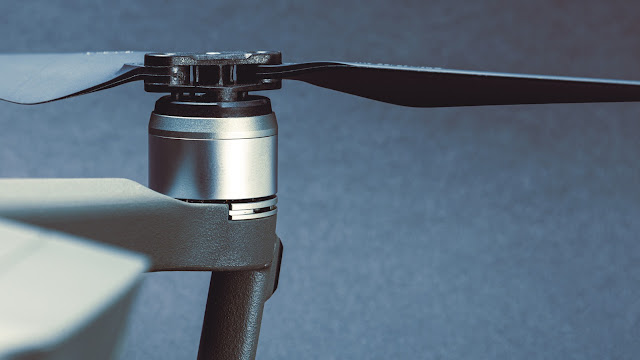3-d printing and additive production appear to be 21st-century goldmines, making waves in the whole thing from rings and automobile production to production in extra current years. Who could have notion that generation like 3-d printing might be mixed with different rising technologies — drones and AI — to make some thing actually remarkable?
A crew of researchers from The University of Bath, led through Imperial College London, posted a paper withinside the journal "Nature" that information a completely tantalizing new production tool: independent drones that paintings like bugs to restore and probably even construct complete systems. The researchers dubbed the producing approach aerial additive production, or Aerial-AM for short.
The drones paintings at the equal precept as extrusion 3-d printers, because of this that they function a print head that sits vertically over the workspace to vicinity a flow of quick-putting fabric in layers on a surface. As the extrusion takes vicinity, the print head movements to create the favored shape. Layers are introduced as had to shape a very last product. We`ve visible huge machines that deposit concrete to print small habitats; withinside the case of this new innovation, the researchers advanced their personal check substances defined as cement-like, but mild sufficient for a drone to tote around.
Aerial-AM flying 3-d printers collaborate like bugs to restore buildings
When it involves those flying, insect-stimulated drones, 3-d printing is simply one piece of the puzzle. The researchers advanced sorts of drones and intend for them to feature in fleets (like bugs) to perform upkeep or production paintings. On the only hand, there are BuilDrones, that are drones tasked with the tough paintings of laying down fabric.
Joining them are ScanDrones, which carry out excellent manipulate and oversight responsibilities the usage of 3-d scanners. The latter sort of drone video display units the BuilDrones' overall performance and the general shape to make certain it conforms to production specifications. The ScanDrones use the statistics received from their intermittent scans to tell the subsequent steps withinside the constructing manner and deliver commands to the BuilDrones accordingly. The researchers had been capable of get the printing accuracy right all the way down to five millimeters (0.2 inches) the usage of this system.
During the development, the researchers revealed with some of specific substances, inclusive of a cement-like combination that would be saved at the drone for longer and that dried speedy as soon as deposited. Having ScanDrones preserve a watch on the development method that the researchers can also check extra unpredictable substances, like increasing polyurethane foam. The researchers wish the brand new generation will open doorways for fast production at some stage in catastrophe remedy and shape upkeep in locations in which it is tough to attain and construct safely. The generation can also show to be an green alternative for huge systems which can be typically used to print different systems like houses.


